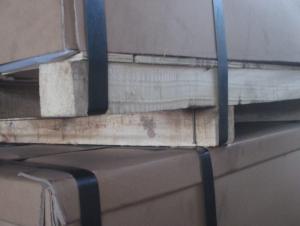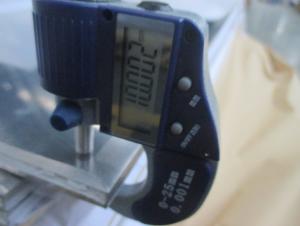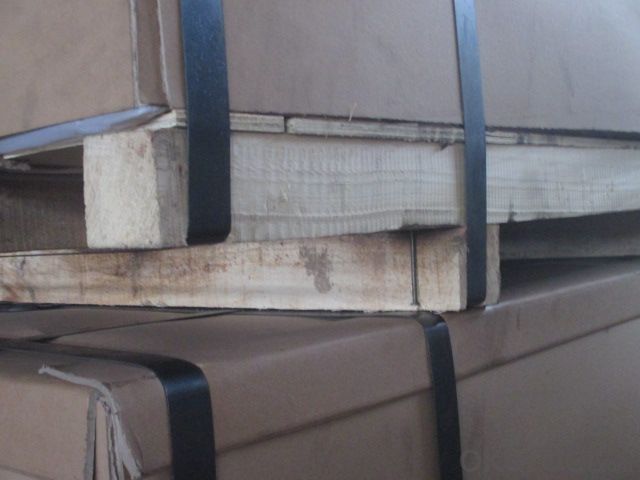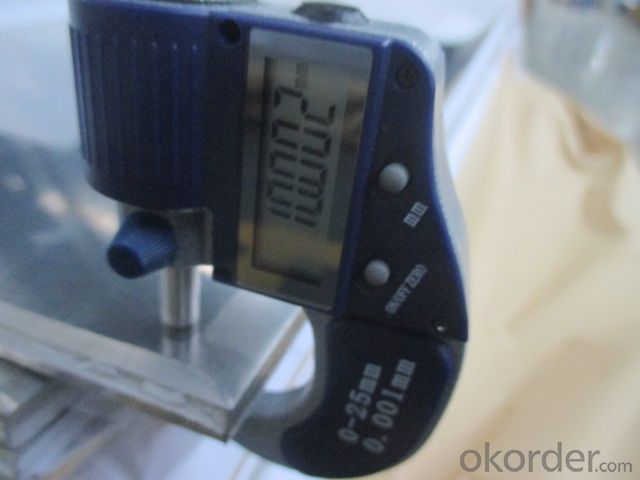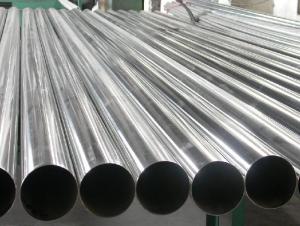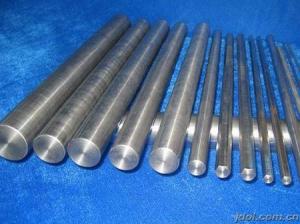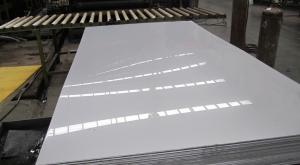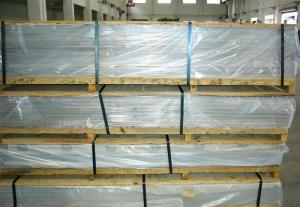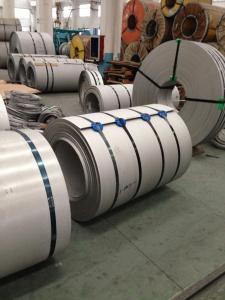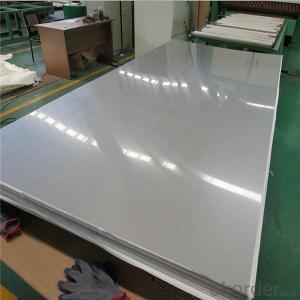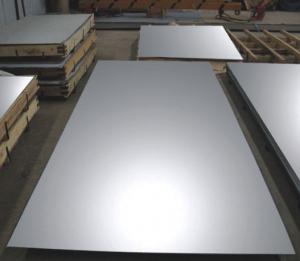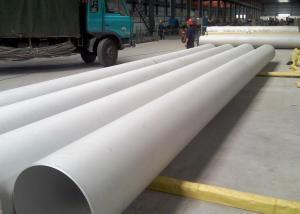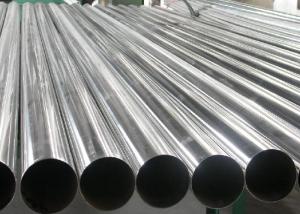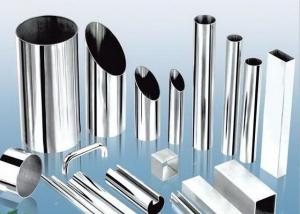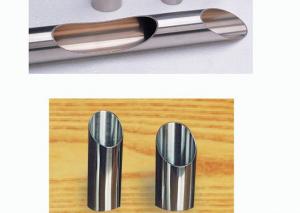Stainless Steel Sheet With Best price In Warehouse Price
- Loading Port:
- Shanghai
- Payment Terms:
- TT or LC
- Min Order Qty:
- 2 m.t.
- Supply Capability:
- 2000 m.t./month
OKorder Service Pledge
OKorder Financial Service
You Might Also Like
1、Structure of 304/2B STAINLESS STEEL SHEET.
STAINLESS STEEL SHEET IS ONE POPULAR PRODUCTS IN CHINA MARKET, IT HAVE SEVERAL DIFFERENT APPLICATIONS, SUCH AS, COwe are very famous for the construction adn other decoration field , etc.
NSTRUCTION, BUILDING, DECORATION, ETC.
THE GRADE ALSO INCLUDE: 200 SERIES, 300 SERIES, 400 SERIES, ETC.
Mainly applied in the industry of furniture, sports equipment, compressed containers, shipbuilding, railway and the automotive.
2、Main Features of the 304 STAINLES STEEL SHEET.
High intensity
Low welding costs.
er anodizing
Easy to operate. All-position welding.
Excellent corrosion resistance
Wide applicability.
Length per spool only for reference.
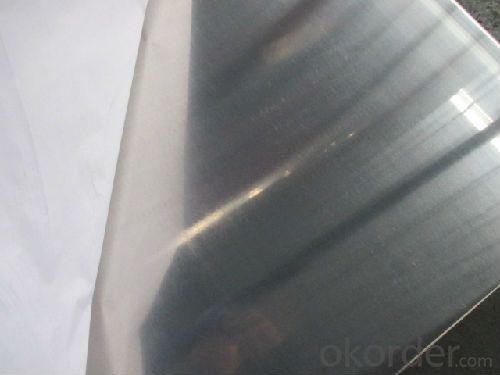
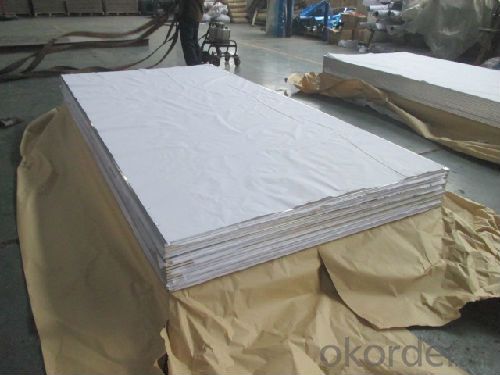
WIDTH*LENGTH: 1219MM*2438MM, 1500MM*3000MM, 1500MM*6000MM,ETC.
THE THICKNESS IS NORMALLY FROM 0.1MM TO 3MM, THEY ARE THE COLD ROLLED SHEET.
5、FAQ of 304/2B STAINLESS STEEL SHEET.
a.What is monthly capacity
---CNBM is one stated own company and our monthly capacity is about 2000tons.
b. Now which countries do you export your goods?
----Now we export to South East Asia,Africa, North America,South America ect.
- Q: Are stainless steel sheets suitable for chemical storage vessels?
- Yes, stainless steel sheets are suitable for chemical storage vessels. Stainless steel is known for its excellent corrosion resistance, making it an ideal material for storing various chemicals. It is resistant to most acids, alkalis, and solvents, which ensures the integrity of the storage vessel and prevents any chemical reactions or leaks. Additionally, stainless steel is highly durable and can withstand high temperatures and pressure, making it suitable for a wide range of chemical storage applications.
- Q: Can stainless steel sheets be used for fermentation tanks?
- Yes, stainless steel sheets can be used for fermentation tanks. Stainless steel is a preferred material for fermentation tanks due to its durability, corrosion resistance, and ability to maintain the desired temperature. It is non-reactive, which means it does not interact with the fermenting substances, ensuring the purity and quality of the product. Stainless steel is also easy to clean and sanitize, which is crucial for maintaining hygienic conditions during the fermentation process. Additionally, stainless steel sheets can be fabricated into various shapes and sizes to meet specific fermentation tank requirements. Overall, stainless steel sheets are a reliable and popular choice for fermentation tanks in various industries, including brewing, winemaking, and food processing.
- Q: Can stainless steel sheets be used for outdoor sculptures?
- Indeed, outdoor sculptures can make use of stainless steel sheets. Due to its remarkable resistance to corrosion, stainless steel is exceptionally suitable for outdoor scenarios where sculptures are subjected to diverse weather conditions. It can endure rain, snow, heat, and UV radiation without compromising its strength or deteriorating. Moreover, stainless steel boasts a sleek and contemporary appearance that can augment the sculpture's visual impact. Its robustness and ability to repel rust render it a favored selection for outdoor sculptures found in parks, gardens, and public areas.
- Q: Can stainless steel sheets be used for HVAC systems?
- Certainly! HVAC systems can utilize stainless steel sheets. Due to its exceptional resistance to corrosion, durability, and ability to withstand high temperatures, stainless steel is a favored material for HVAC systems. It finds frequent application in various HVAC components, including ductwork, vents, and heat exchangers. Stainless steel sheets offer a sleek and hygienic surface, safeguarding air quality by preventing the accumulation of dust, dirt, and other pollutants. Moreover, stainless steel is effortlessly cleaned and maintained, rendering it an ideal option for HVAC systems demanding regular upkeep and cleaning.
- Q: Seeking stainless steel plate 304 material and 304j material what is the difference?
- 304 applications: petroleum, chemical, pharmaceutical, food, machinery, aerospace, construction, military, hardware, boilers, gas, plumbing and heating equipment, ships, power plants and other industries.
- Q: Can stainless steel sheets be used for architectural wire mesh?
- Yes, stainless steel sheets can be used for architectural wire mesh. Stainless steel is a durable and corrosion-resistant material, making it suitable for various architectural applications, including wire mesh installations. It offers strength, versatility, and an attractive appearance, making it an ideal choice for creating functional and aesthetically pleasing architectural wire mesh designs.
- Q: What is the difference between stainless steel sheets and regular steel sheets?
- The composition and properties of stainless steel sheets and regular steel sheets are different. Stainless steel sheets are primarily made of iron and contain at least 10.5% chromium, which gives them their unique stainless properties. On the other hand, regular steel sheets are primarily made of iron and carbon, without any significant amount of chromium. The presence of chromium in stainless steel sheets provides several advantages. Firstly, it enhances the material's corrosion resistance, making it highly resistant to rust and staining. This makes stainless steel sheets suitable for applications in environments where moisture or exposure to corrosive substances is a concern, such as in the food and beverage industry or marine applications. Additionally, stainless steel sheets have excellent heat resistance, making them suitable for high-temperature applications. They can withstand extreme temperatures without losing their structural integrity, which may not be the case for regular steel sheets. The appearance of the two materials also differs. Stainless steel sheets have a bright, reflective surface due to their chromium content, giving them a lustrous and modern look. On the other hand, regular steel sheets have a duller and less polished appearance. Furthermore, stainless steel sheets are often more expensive than regular steel sheets due to additional manufacturing processes and the higher cost of the chromium alloy. However, the enhanced corrosion resistance and durability provided by stainless steel sheets can often justify the higher cost in various applications. In conclusion, stainless steel sheets differ from regular steel sheets in terms of composition, properties, appearance, and cost. Stainless steel sheets offer superior corrosion resistance, heat resistance, and a visually appealing surface, making them ideal for specific applications where these attributes are required. Regular steel sheets, on the other hand, are more affordable but lack the unique properties of stainless steel.
- Q: Can stainless steel sheets be used for signage?
- Yes, stainless steel sheets can be used for signage. Stainless steel is a durable and weather-resistant material, making it suitable for both indoor and outdoor signage applications. It offers a sleek and professional look, and can be customized with various finishes and colors to meet specific design requirements.
- Q: What are the different types of textured patterns available for stainless steel sheets?
- There are several types of textured patterns available for stainless steel sheets, including diamond, quilted, linen, and checkerplate patterns.
- Q: Are stainless steel sheets available in different colors?
- Yes, stainless steel sheets are available in different colors.
Send your message to us
Stainless Steel Sheet With Best price In Warehouse Price
- Loading Port:
- Shanghai
- Payment Terms:
- TT or LC
- Min Order Qty:
- 2 m.t.
- Supply Capability:
- 2000 m.t./month
OKorder Service Pledge
OKorder Financial Service
Similar products
Hot products
Hot Searches
Related keywords

